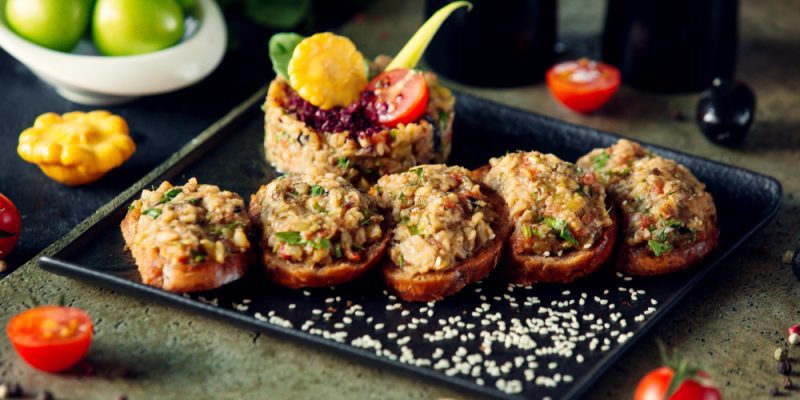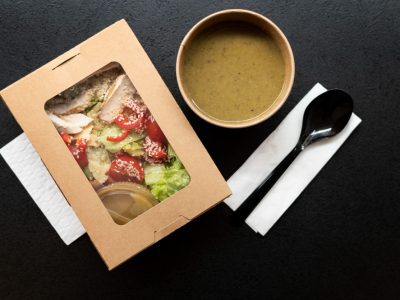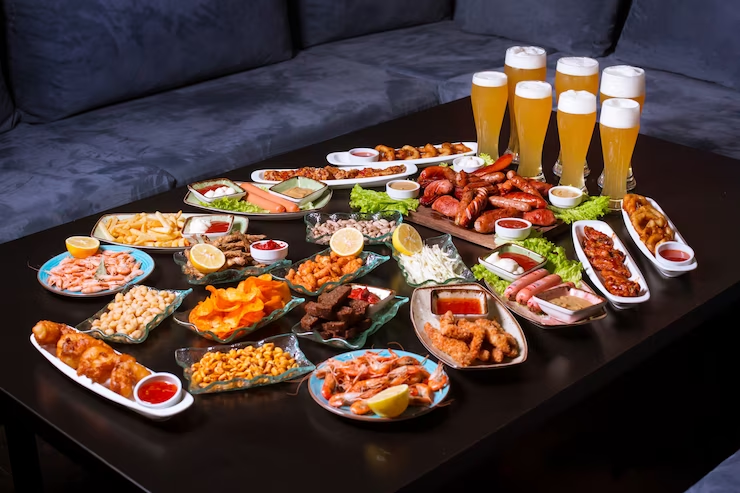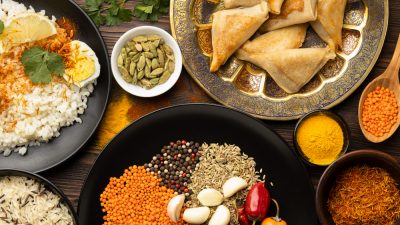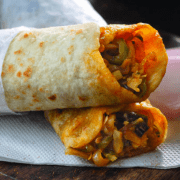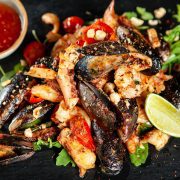At its heart, fusion cuisine is a thrilling new culinary adventure that arises from the seamless mingling of several culinary traditions.
Dishes that are both familiar and surprising are born at this crossroads of culinary traditions, where flavours, ingredients, and techniques converge. Fusion cuisine emerged in the second half of the twentieth century, although the concept of mixing several culinary traditions predates it. As a result of continuous migration, trade, and conquest, the culinary traditions of many cultures have always mixed together. Think about the old Silk Road, a trade route that influenced the cuisines of many countries by bringing spices and other commodities across enormous distances. Also, consider how the occupying power’s cuisine and cooking methods shaped local cuisine as a result of colonialism. Fusion cuisine as we know it now originated from these trades of the past.
In contrast, contemporary fusion cuisine often requires a more systematic and creative approach, with chefs intentionally combining elements from many culinary traditions to create unique and interesting dishes. Fusion cuisine is currently trending up due to increasing travel, a more tolerant attitude towards other nations’ food, and a more globalised society. More than ever before, cooks have the leeway to explore the countless ways in which various cuisines can enrich one another. Online meal delivery services like HOGR in Bengaluru have also played a role, since they have simplified the process for clients to sample fusion cuisine from inventive restaurants and home chefs. The history, evolution, present forms, and creative thought behind fusion food will all be covered in this article.
A Guide to Modern Fusion Food
A devotion to heritage and an openness to new ideas and methods characterise the dynamic realm of contemporary fusion cuisine. Bringing together different cuisines requires more than just cutting and dicing; it necessitates an in-depth understanding of flavour profiles, cooking techniques, and cultural contexts.
Modern Fusion Food
Intentional and, at times, intricate blending of flavours and methods from numerous cuisines is the characteristic of contemporary fusion cooking. Instead of just accidentally blending traditions, chefs nowadays are intentionally searching for the harmonious interplay between flavours and textures from seemingly unrelated cuisines. Combining ingredients from different cultures and preparing them in diverse ways is one example of this, while creating entirely new dishes that incorporate components from many culinary traditions is another. The possibilities are almost limitless. You might get sushi burritos that combine Mexican and Japanese flavours, or tacos that combine Indian and Latin American spices.
The key to a successful modern fusion meal is mutual understanding and harmony. Making a new and delicious dish that pays homage to the best parts of both cuisines is more important than just combining them. This often necessitates much trial and error and an in-depth understanding of the fundamental principles of the two cuisines being combined. Without a doubt, the proliferation of culinary tourism and the relative ease of accessing information about food traditions around the world have both contributed to the ingenuity within contemporary fusion cuisine. Travelling chefs are always eager to share their special spin on international cuisine.
Cross-Cultural Cooking
The term “cross-cultural cooking” is used to describe any type of gastronomic interaction between different cultures. Fusion cuisine, which combines elements from other cultures in a more methodical and exploratory way, is an example of cross-cultural cookery. Additionally, “cross-cultural cooking” might mean adapting a classic dish from one culture to suit the preferences and ingredients of another. Making a traditional Italian pasta dish with seasonal Indian vegetables is one example of cross-cultural cookery.
The ethnic exchange of ingredients and cooking techniques has evolved many beloved cuisines over millennia. Think about how important tomatoes are in Italian cuisine now; they were originally from the Americas. One thing that cross-cultural cooking has shown us is how many different culinary traditions are dependent on one another and how ideas about food can easily move from one place to another. With a more diverse population comes a greater diversity of cuisines, and cross-cultural cooking has grown in popularity in many cities, Bengaluru included.
Hybrid Cuisine
Another phrase that describes food that combines different aspects of several culinary traditions is hybrid cuisine, which is commonly associated with fusion cuisine. The goal is to create a harmonious combination where the distinct flavours and ingredients may be tasted separately yet culminate in a one-of-a-kind culinary character. The boundaries between the original culinary forms dissolve in hybrid cuisine, creating a really unique dining experience, much like in fusion food. One example of hybrid cuisine would be a dish that blends the subtle tastes of South Indian rasam with the fragrant spices of Japan. Not only a Japanese dish with Indian spices, or an Indian dish with Japanese spices; it is a hybrid that combines the best of both worlds. Successful hybrid chefs typically have an in-depth familiarity with the basic flavours and methods of both the original cuisines and their respective fusions, which allows them to craft unique and aesthetically pleasing dishes. Hybrid cuisine’s daring attitude is a big draw for foodies looking for something out of the ordinary.
Contemporary Fusion
The most recent iteration of this culinary movement, known as contemporary fusion, is defined by an increasingly complex and elegant method of combining culinary traditions. It probes further into the realm of flavour pairings, textural contrasts, and inventive ways than it does basic combinations. Chefs that specialise in modern fusion typically have broad backgrounds in other cuisines, which allows them to put their technical chops to good use while also pushing the envelope creatively. For example, creative plating that visually represents the mixing of culinary aesthetics could be involved, or utilising molecular gastronomy techniques to reinterpret traditional flavours from diverse cultures could be involved.
When it comes to modern fusion, the boundaries of traditional cuisine are sometimes pushed, which challenges perceptions and creates really one-of-a-kind eating experiences. Contemporary fusion shows that fusion may develop and become an important component of today’s culinary scene, even though others see it as a fad. Bengaluru’s most upscale eateries and cutting-edge chefs are frequently the ones that pioneer modern fusion cuisine, and occasionally you can find such dishes served up on certain platforms that give a taste of this experimental style of cooking to a broader audience.
Summary
A lively and exciting part of the world of international food is fusion cuisine in all its manifestations. Beginning with its origins in cultural interchange and continuing through the creative manifestations of contemporary fusion cuisine, this approach to cooking honours the fascinating potential that results from the meeting of several culinary traditions. There is a fundamental principle of exploration, creativity, and a profound appreciation for the diverse culinary traditions of our world at the heart of all forms of fusion cuisine, from the deliberate blending of flavours in modern fusion to the larger interactions of cross-cultural cooking, from the creation of new identities in hybrid cuisine to the refined artistry of contemporary fusion. Fusion cuisine, which offers customers a continually expanding and intriguing spectrum of gourmet experiences, is set to become even more widespread as globalisation continues to link people and ideas. In the end, fusion cuisine demonstrates how food can break down barriers and bring people together through shared experiences in a delightful way.
A food enthusiast and a blogger – someone who likes to eat and write about it. I’m passionate about exploring different cuisines and challenging my palette. I give into my food craving regularly and am often on the hunt to find my new favorite food place in town.
